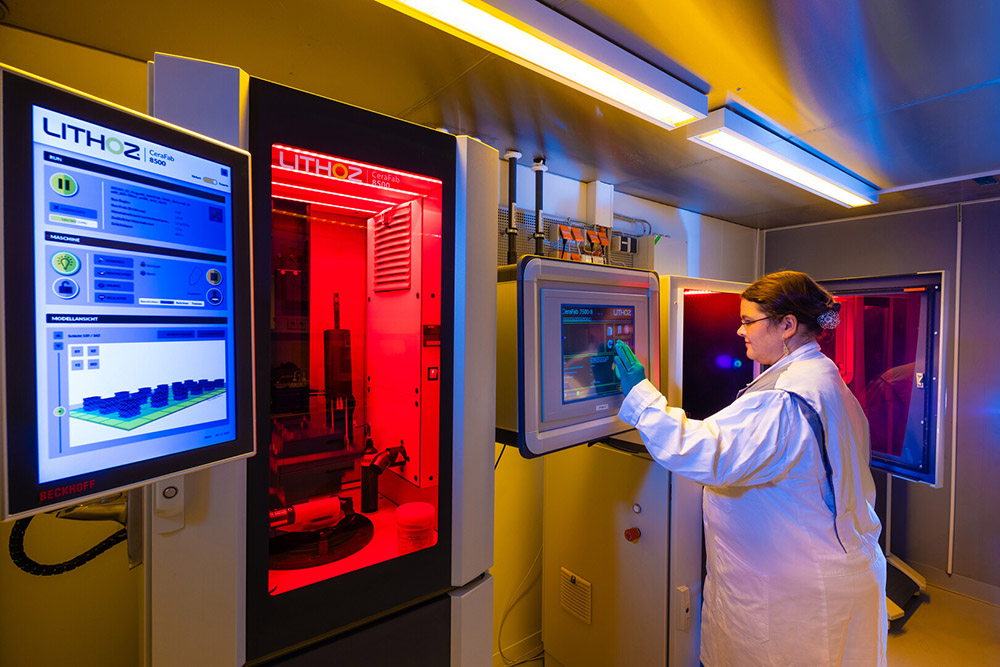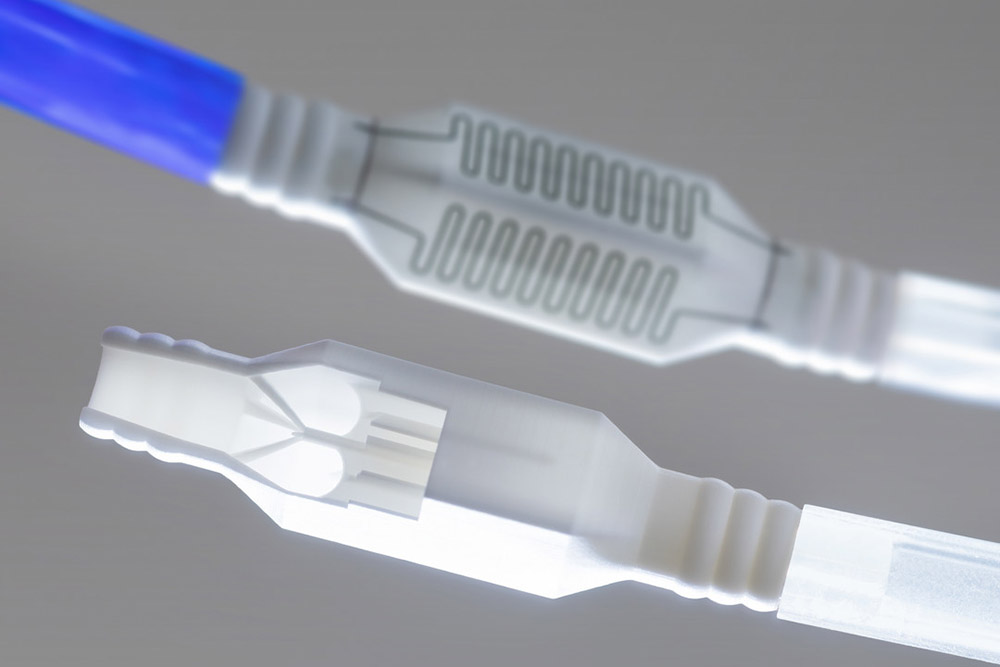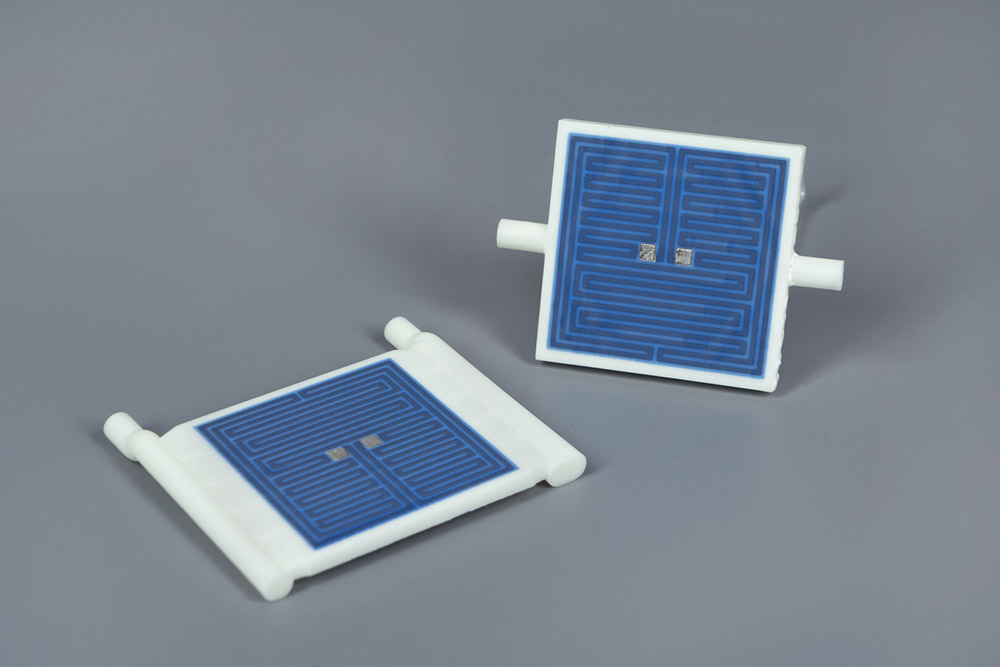


Advanced ceramics have combinations of properties that other classes of materials cannot achieve. They are characterized by very high thermal, chemical and mechanical resistance and usually also have a lower density than metals. However, these outstanding properties also make it difficult to process the components and thus to realize complex component geometries.
By adapting additive manufacturing processes for ceramic materials (CerAM), ceramic components can be complexly shaped, further functionalized and miniaturized – as is common for other classes of materials. As a result, highly complex ceramic components can be produced economically, with post-processing reduced or even eliminated. Additively manufactured ceramics are now, for the first time, a real alternative to components made of polymers and metals, especially for applications in harsh environments.
In addition to ceramics, Fraunhofer IKTS also processes other materials with the same process chain, e.g. hardmetals and cermets, powder metals, glasses as well as composites from different material classes.
Production of components from several materials (hybridization)
The functionalities of additively manufactured ceramic components can be further enhanced by integrating additional materials. This can be achieved by applying functional materials to the component surfaces or introducing them directly into the component during the molding process while maintaining a high level of structural integrity. Here we pursue two different manufacturing strategies: On the one hand, the different materials are combined during the forming process, i.e. before the heat treatment process (simultaneous manufacturing), and on the other hand, the additional materials are applied only after the thermal treatment of the first material (sequential manufacturing). This allows the following combinations of properties and exemplary applications to be realized:
- Tight and porous: catalytic support structures, filters
- Conductive and insulating: integration of electrically conductive tracks, sensors (e.g. thermocouples) or actuators (e.g. electric heaters)
- Combination of different colors